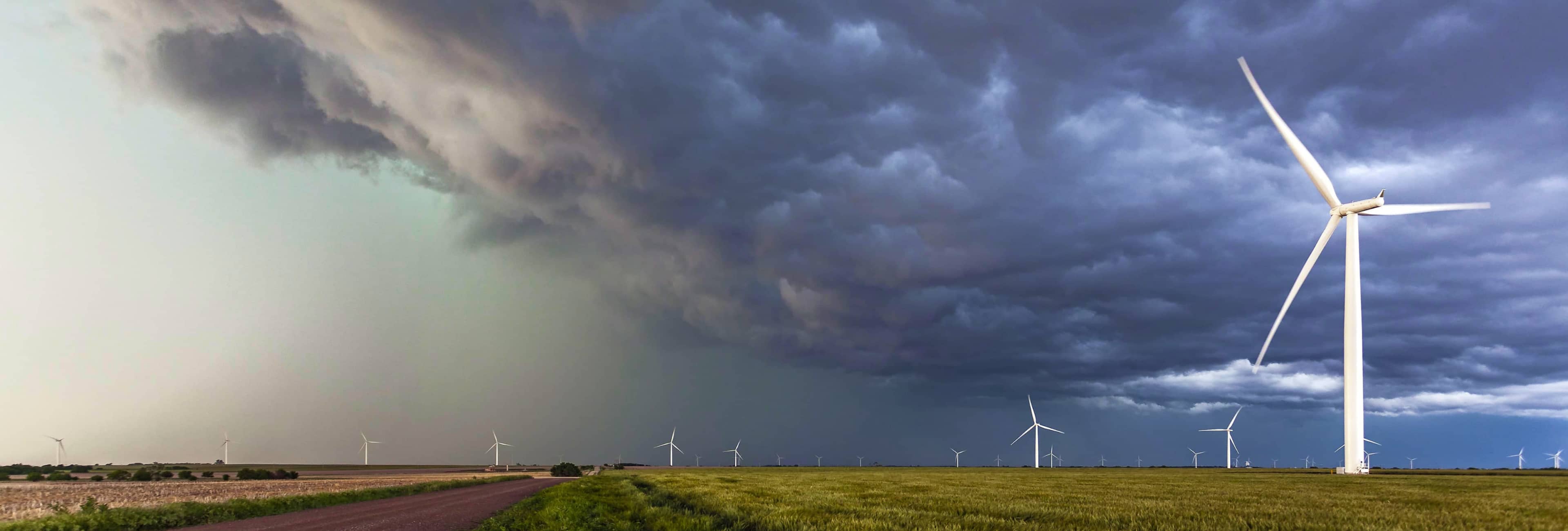
What is energy resilience and why does it matter?
Power outages can have numerous causes, but the primary reason for a power failure or network supply disruption is often physical damage within localized sections of the distribution system. This damage can result from adverse weather conditions, accidents, or malfunctioning or ageing equipment. The recent assault on Ukraine's energy infrastructure has underscored the imperative of resilience in national electricity grids. Every thermal and hydroelectric power plant in the country has suffered damage, with significant repercussions for energy supply. While the focus may be on Ukraine, the broader implications of such events resonate across borders, urging us to reevaluate and reinforce our grid systems. Recent numbers show that energy shortages occur globally, impacting governments and large businesses.
Energy resilience refers to the ability of an energy system to handle and recover from unexpected disruptions. It helps to keep important services and infrastructure running during and after events that could cause long power outages. Implementing advanced energy technologies plays a vital role in enhancing the resilience and stability of our power grids, ensuring they can withstand and quickly recover from such disruptions.
Energy reliability vs. resilience
Some people mistakenly use the terms reliability and resiliency interchangeably, but they have distinct meanings. Historically, network operators have concentrated their planning and design efforts on enhancing system reliability under normal conditions and establishing protocols to manage events according to past occurrences. However, designing for resilience presents distinct challenges encompassing all facets of the electric grid. Resilience transcends merely reducing the likelihood of outages; it encompasses curtailing their scale and impact, swiftly restoring power, and gleaning insights from these experiences to refine future responses.
Achieving a resilient power system design demands a comprehensive assessment of both the resilience of individual components within modern electric grids and the resilience of the system as a whole. While there is overlap between the two, with enhancements in component resilience bolstering system resilience, it also entails evaluating the entire system, including interconnected infrastructures such as natural gas networks, auxiliary support systems, and commercial communication networks vital for grid operations. Ultimately, enhancing resilience necessitates regulatory deliberations on funding mechanisms for upgrades.
Strategies for strengthening the resilience of electricity grids
Network reliability and resilience can be improved but never made perfect. Therefore, system owners, operators, and regulators must prioritize their investments based on potential benefits. Here are several strategies that national electricity system operators can employ to enhance resilience.
Cost-benefit analysis
One way to improve network resilience is to characterise individual threats together with their associated vulnerability, likelihood, and impacts. All mitigation strategies have cost-performance trade-offs, and all investment budgets are finite. However, the use of network simulation tools can help to understand the optimum cost-benefit outcome when aiming to enhance overall system resilience.
Simulation of threat scenarios to improve associated network resilience
Learning from real-world events, such as attacks on substations, underscores the importance of simulating threat scenarios to identify vulnerabilities and develop effective mitigation strategies.
DAKAR - ELEKS' real-time power systems management solution for large power networks has flow optimisation capability to rapidly identify how to reroute electricity demand flow via alternative substations. Its security-constrained power flow simulation tool can be used to model the impact of single points of failure within a network, under different threat scenarios.
DAKAR offers a real-time network modelling capability that allows ELEKS consultants to quantify the network's resilience and suggest various mitigation strategies or alternative system architectures that will enhance resilience. A particularly important consequence of system simulation is understanding the likelihood and drivers of cascading failure sequences. A greater understanding of this non-linear network behaviour allows system operators to implement technical or procedural countermeasures to thwart cascading failure scenarios.
Critical component inventory analysis
One important factor to consider is the prolonged replacement time for high-voltage transformers, attributed to their considerable size and extended lead times. With limited options for rerouting power from distant generating stations to load centres amidst peak demand, the capacity to bypass damaged substations is severely restricted. Therefore, a failure of critical substations could precipitate widespread rolling blackouts until these substations undergo repairs. In such scenarios, the presence of compact, readily transportable recovery transformers is invaluable.
Creating a recommended inventory of critical components for strategic pre-positioning across a country could be an effective solution. The ELEKS team can assist with this process. Such an inventory would be developed in alongside a simulation study which seeks to isolate those components of the network architecture which are high risk or single points of failure.
Situational awareness and grid intelligence
Improving situational awareness and real-time event monitoring in the control room, is an important part of being prepared for unplanned outages. Drawing from insights gained from responding to network attacks and navigating large-scale cyber attacks, we at ELEKS have devised a range of platform-oriented features to mitigate threats posed by malicious actors or extensive natural disasters. These features encompass:
- Continuous gathering of diverse sensor data (both cyber and physical) from critical grid infrastructure.
- Integration of sensor data with other intelligence sources to pinpoint the root cause of disruptions, whether cyber-related or physical in nature.
- Implementation of visualization techniques crucial for enabling operators and engineers to maintain situational awareness.
- Application of analytics, including machine learning, data mining, game theory, and other artificial intelligence approaches, to generate real-time recommendations for appropriate responses to identified attacks, failures, or impairments.
Vulnerability due to interdependent infrastructures
The reliable operation of the grid depends on the performance of multiple supporting infrastructures. For example, outages can be caused by disruptions to natural gas production and delivery, commercial communications infrastructure, and transportation systems, among other critical infrastructures.
At ELEKS we have a significant capability in pipeline and LNG gas flow reporting, through our appygas platform. By using it, energy analysts can understand the within-day commercial and physical flows of pipeline gas across Europe. This is a critical dependency for the European power system, and as such integrating the physical availability or network availability into the national electricity control room will help deepen network resilience under adverse availability of natural gas at a national level.
System restart performance
Traditionally, black-start plans have focused entirely on large, centralized utility generation assets. As the grid evolves to include larger amounts of Distributed Energy Resources more broadly, it becomes important to consider the role these resources might play in the context of black start.
Post fault – rapid data gathering using drones
Unmanned Aerial Vehicles (UAVs) or drones, can systematically survey damage to a system using both visible light and LiDAR imagery. Highly maneuverable UAVs can hover over problem areas for a long duration. The results of UAV inspections will be most useful if a utility has previously built a geocoded baseline of its entire system. This allows new imagery to be compared with baseline imagery and combined with asset management tools and workforce management systems to establish and coordinate repair priorities and progress.
Conclusions
The global energy landscape's evolving challenges necessitate a proactive approach to fortifying national electricity grids. The lessons drawn from recent events underscore the critical importance of resilience in maintaining energy security. National grid operators can significantly enhance their systems' resilience by leveraging advanced technologies, conducting comprehensive threat simulations, and prioritizing situational awareness.

FAQs
Energy resilience refers to the ability of an energy system to predict, prepare for, endure, adjust to, and swiftly recover from disruptions. These disruptions might arise from various sources like natural disasters (e.g., hurricanes or ice storms), physical damage (caused by accidents or aging infrastructure), operational errors, or intentional human actions (such as cyberattacks or sabotage).
Indicators of energy resilience cover various factors that collectively measure an energy system's strength and adaptability. One important indicator is the frequency and duration of power outages, which assess how often and for how long disruptions occur. Systems with fewer and briefer outages are generally more resilient. Another crucial indicator is the recovery speed after disruptions, which shows how quickly power can be restored after an incident.
Having multiple and varied energy sources is crucial, allowing systems to better cope with failures in any single component. Another important factor is the robustness of infrastructure, which highlights its ability to withstand damage from extreme weather, accidents, or deliberate attacks.
The difference between energy reliability and resilience lies in their focus and scope within the energy system. Reliability pertains to regular and minor occurrences. It is limited to expected unpredictability in operational circumstances, such as temporary interruptions within a specific grid section. Meanwhile, resilience encompasses a broader approach and addresses infrequent, high-impact occurrences such as natural disasters, cyberattacks, and other emergencies.
Related Insights








The breadth of knowledge and understanding that ELEKS has within its walls allows us to leverage that expertise to make superior deliverables for our customers. When you work with ELEKS, you are working with the top 1% of the aptitude and engineering excellence of the whole country.

Right from the start, we really liked ELEKS’ commitment and engagement. They came to us with their best people to try to understand our context, our business idea, and developed the first prototype with us. They were very professional and very customer oriented. I think, without ELEKS it probably would not have been possible to have such a successful product in such a short period of time.

ELEKS has been involved in the development of a number of our consumer-facing websites and mobile applications that allow our customers to easily track their shipments, get the information they need as well as stay in touch with us. We’ve appreciated the level of ELEKS’ expertise, responsiveness and attention to details.

